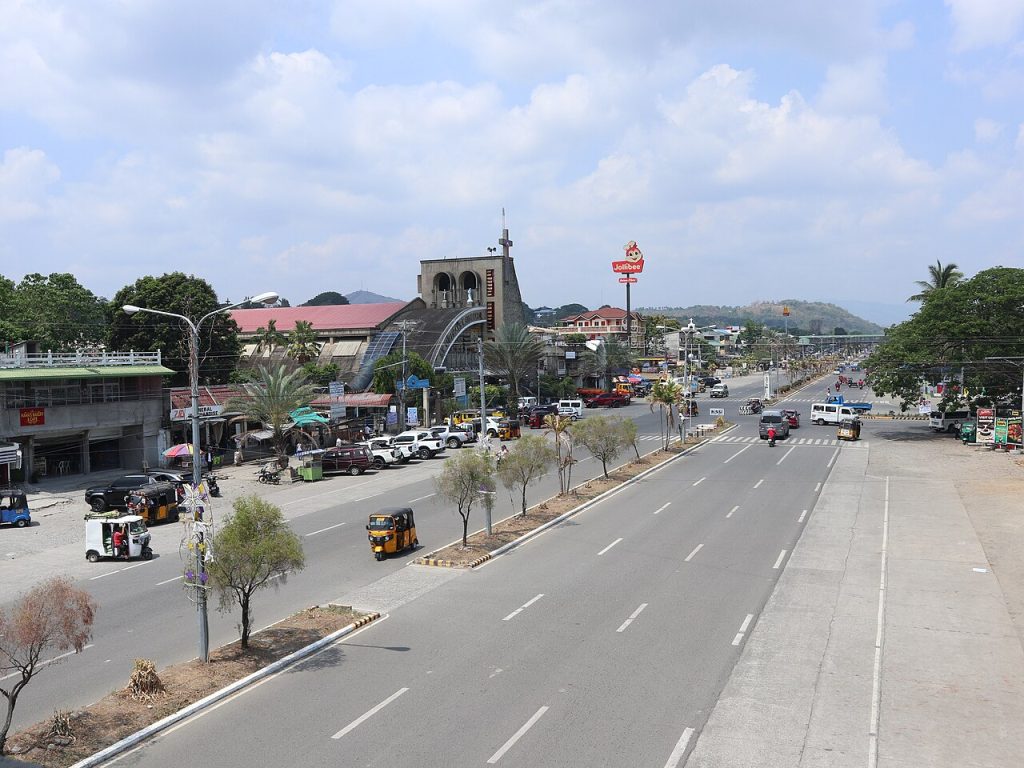
Tabuk-Enrile Road by Patrickroque01
Discovering Tabuk, Kalinga: The Gateway to Cordillera’s Heart
Nestled in the lush Cordillera Administration Region of Northern Luzon, the component city of Tabuk is the vibrant provincial capital of Kalinga province. This landlocked city has 43 barangays, a 2020 population of 121,033 people, and a land area of 700.25 sq. kilometers (270.37 sq. miles).
While it may not yet be a household name among tourists, Tabuk holds an abundance of cultural treasures, scenic landscapes, and warm-hearted communities that make it one of the Philippines’ hidden gems.
by Music & Travel Journey
A City with Soul and Story
Tabuk is more than just a stopover—it is a living tapestry of indigenous traditions, agricultural vitality, and natural splendor. It is home to the Kalinga people, one of the Cordillera’s proudest indigenous groups, known for their fierce warrior spirit, deep sense of community, and beautifully intricate body tattoos. These tattoos, traditionally inked by hand using a thorn and soot, tell stories of bravery, protection, and identity.
One of the most iconic symbols of this tradition is Whang-od Oggay, the famed mambabatok (tattoo artist) from Buscalan, a small village in the mountains of Kalinga. Although Buscalan is not within the city proper, Tabuk is the main gateway for travelers making the journey to meet her.
Nature and Adventure Beckon
For those who thrive on outdoor adventures, Tabuk offers a refreshing break from the urban grind. The Chico River, the lifeblood of the region, is a prominent feature of Tabuk’s landscape. It’s ideal for whitewater rafting—especially during the rainy season when the currents become more exhilarating. Local rafting tours provide both adrenaline and a chance to witness the majestic scenery of rice terraces and dense forests lining the riverbanks.
Hikers and nature-lovers will enjoy exploring nearby trails that lead to waterfalls, springs, and panoramic mountain views. Sites like Mataguisi Church Ruins, Naneng Heritage Village, and Dupag Rock Formations provide not just sightseeing, but insights into Kalinga’s layered history.
A Taste of the Local Life
Tabuk’s economy is rooted in agriculture, with vast fields of rice and corn stretching across its valleys. It’s a landscape that feeds not only the body, but also the soul. The warmth and hospitality of its people shine through in everyday life—from shared meals to community dances.
Don’t leave without trying local delicacies like etag (a native smoked meat), inafarat (a Kalinga rice wine), and various native rice-based dishes. The markets in Tabuk also offer handwoven Kalinga fabrics and beadwork, perfect as souvenirs or as a way to support local artisans.
by Kyla Mae De Guzman
A City Evolving
While Tabuk maintains its indigenous roots, it is also a city in transition. Modern developments are gradually emerging, from new government infrastructures to schools and transport links. Yet, what makes Tabuk remarkable is its ability to grow while preserving its cultural heritage.
For those looking to explore the Philippines beyond beaches and nightlife, Tabuk offers something more meaningful—a deep dive into indigenous identity, nature’s unspoiled beauty, and the rhythm of a community that honors its past while embracing the future.
Tips for Travelers:
- Best time to visit: November to April, when the weather is cooler and rafting season is optimal.
- How to get there: Tabuk is accessible via land from Baguio, Tuguegarao, or Manila, though the trip can take 10–12 hours. The scenic drive through mountain roads is part of the adventure.
- Respect local customs: Kalinga people are proud of their heritage. Ask permission before taking photos, especially of individuals or sacred sites.
Final Thoughts
Tabuk, Kalinga, may not be on every traveler’s radar, but perhaps that’s exactly what makes it special. It invites you to slow down, connect, and discover the soul of the Cordillera. Whether you’re rafting the Chico River, exploring centuries-old villages, or simply sharing coffee with a local, the experience stays with you long after you’ve left the mountains behind.
by Kuji Gaming